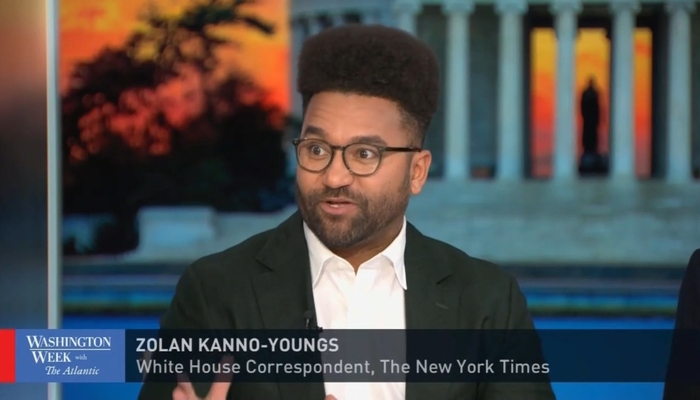


Here we go again, another White House correspondent “news analysis” in Friday’s New York Times that sounded just like an editorial. Zolan Kanno-Youngs conjured up racially charged attacks on “people of color” in Trump’s criticism of the Smithsonian Institution’s excessive focus on the dark parts of America’s history, including slavery. The headlines:
In Trump’s Ideal Picture of America, Diversity Is Taboo
Using the full power of the federal government, President Trump has promoted a vision of America that challenges the legitimacy of the Black experience.
Kanno-Youngs began:
President Trump accused the Smithsonian Institution this week of focusing too much on “how bad slavery was” and not enough on the “brightness” of America. He has ordered Confederate statues honoring those who fought to preserve slavery to be restored and celebrated. And he used language carrying uncomfortable racial overtones to describe Washington, a historically Black city, as a hotbed of “savagery, filth and scum” in need of “beautification.”
(Here's the relevant bit of what Trump actually posted: “The Smithsonian is OUT OF CONTROL, where everything discussed is how horrible our Country is, how bad Slavery was, and how unaccomplished the downtrodden have been — Nothing about Success, nothing about Brightness, nothing about the Future.”)
Kanno-Youngs painted a cartoonish picture of Trump as symbol of ignorant white privilege.
Over the past seven months, Mr. Trump’s words and actions have revealed what he sees as an ideal picture of the United States, in which the concept of diversity is taboo; the traditional power centers in America — white and wealthy men — get the benefit of the doubt; immigrants are suspect or unwelcome; and people of color must set their grievances and outrage aside.
The anonymous “critics” cited sound awfully similar to the reporter's own liberal worldview.
In the view of his critics, Mr. Trump has used the power of the federal government to promote a vision of America that not only challenges the legitimacy of the Black experience, but also demeans and dehumanizes people of color. In the process, they say, he has elevated and even endorsed a version of American culture that venerates a white-dominated society of old, and casts the history and reality of race in the United States as unwelcome or suspiciously “woke.”
“He’s very much in opposition to a lot of what has happened in terms of race over the last couple of generations,” said Chris Myers Asch, a historian and the author of the book “Chocolate City: A History of Race and Democracy in Our Nation’s Capital.”
“He’s born wealthy. He’s always had easy access to power. It works very well for him. So anything that undermines that world is suspect,” Mr. Myers Asch said.
Kanno-Youngs proclaimed "The White House did not respond to requests for comment." It makes you wonder about the pitch to Team Trump: "Would you like to respond to the reality that you dehumanize black people?" He said "Trump allies" say his voters feel "political leaders, cities, universities and the country’s culture more broadly had become too permissive or too liberal in their attitudes toward crime, border security, diversity efforts, student protests and other parts of American society."
The reporter thinks any edits of "woke" history are "hiding reality. He found a radically named and radically inclined visitor of a Smithsonian museum.
As he exited the museum, Mr. [Jameel] Shabazz said he felt Mr. Trump was trying to erase a critical part of the nation’s story.
“It shows a lot of history that I didn’t even know, and for him to take it away — you trying to hide something that America was built on,” said Mr. Shabazz, who donned a hat labeled “melanin” — a celebration of Black pride. “You trying to make America great again, you gotta keep the history.”
